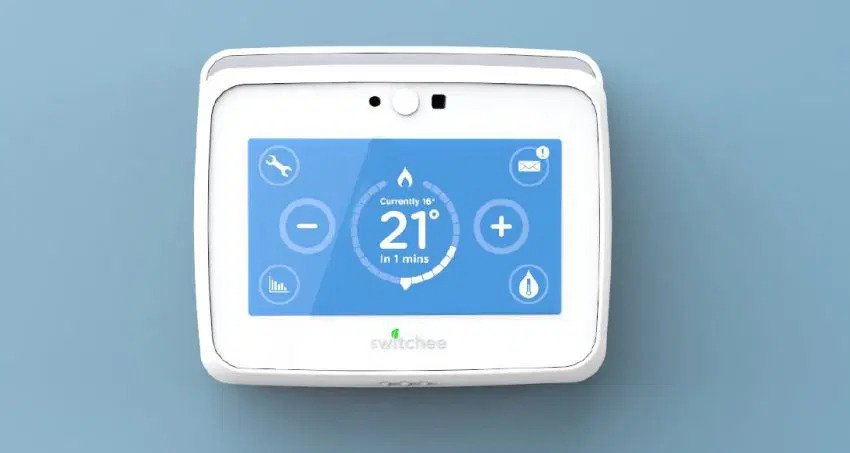It might shock you that the built world — real estate — is responsible for a whopping 40% of annual global CO2 emissions. While we're always hearing about the evils of cars and flying, property emissions get far less attention.
And if things stay the way they are, we're set for a massive increase in property carbon emissions.
Consider that we're currently facing a global housing shortage. It's been coming for a while. In 2018 researchers predicted the need to build another two billion homes to meet the future demand over the next 80 years.
With more property comes an even greater environmental impact, particularly in urban areas. And the challenge – and the opportunity – extends from supply chain to materials, to design, architecture, construction, building, operations, and energy.
Gregory Dewerpe is the founder and CIO of investment fund A/O PropTech.
He's on a mission to turn "the largest, least digitised, most polluting industry in the world" into a sustainable carbon-neutral sector by investing in startups bringing sustainability tech to real estate.
He asserts:
"Everyone talks about 2050 commitments. We think that if we're not well on track by 2030, 2050, it doesn't matter anymore."
A two-pronged approach
The A/O PropTech fund is broadly divided between what Dewerpe calls "Impact natives" and "Impact enablers".
It's a framework that generally captures a lot of the activity happening in carbon-neutral real estate right now (and is not limited to the A/O Proptech portfolio).
Impact native companies set out to target decarbonisation and climate resiliency.
Think of efforts to optimise energy use through passive house design, reducing reliance on air conditioning and heating, and white roofs on homes to reduce urban heat islands. In materials innovation,
German startup Polycare is committed to circular design and closing the building materials loop. In addition to developing new sustainable materials, it's researching the integration of secondary products into the construction industry materials cycle.

An example is binding building rubble, industrial waste and secondary materials in their Polyblocks, which would otherwise be residual waste with an almost endless half-life.

Also making waves is French 3D printing company Xtreee who is rolling out the first generation of 3D printed dwellings at a fraction of the cost of time of conventional home construction.
By comparison, impact enablers are about improving digitisation. Dewar explained :
"Given the antiquated, fragmented nature of the real estate industry, we believe we also need to invest in companies that are improving digitalisation, automation, and transparency in the sector so that it becomes a more fertile ground for innovation, and these companies can scale faster."
An example is the UK company Satellite Vu. The company is launching a satellite constellation capable of measuring the thermal emissions of any building on the planet.
According to Dewerpe, there's currently no effective way to collect like-for-like data from non-identical buildings. This means it's very difficult to gain a single source of truth for emissions data.
By measuring thermal emissions, you can identify "at a high level where the biggest problems are and allocate your CapEx resources to go and fix those buildings, then once you fix them, you can actually track and monitor the improvement or reduction in emissions, improvement of thermal leakage, etc."
Also in the transparency space is Climate X, with a data platform enabling large property portfolio owners to envision their climate risk on an asset level.
It combines climate models with up-to-date real-world data and uses physical modelling, enabling businesses like real estate companies to preempt incoming regulatory requirements.
However, what's essential is the interplay between impact natives and impact enablers.
In the UK, Switchee has developed a smart thermostat that uses different sensors (temperature, light, motion, humidity and air pressure) to understand when residents are home.

Each device automatically creates an occupancy profile for its home, then adjusts the heating to save residents money.
For example, Switchee turns the heating off when the home is empty and warms the home when residents are coming back.
However, you need a draft-free, insulated home in the first place for it to stay warm. Still, the company is tackling the very real problem of energy poverty, not only keeping homes warm for less but also reducing wasted energy.
But there's no point telling people to turn off their heating or cooling to save energy if you build inefficient, draughty homes with poor insulation, let alone repair them.
Like security, sustainability needs to come in the design phase. I was once on a panel with an architect. He suggested that the audience full of renters could "ask your landlords if they could move the windows to the other side of the house". I wish I were joking.
But still, there's an essential interdependency between structural and digital transformation, especially as retrofitting is crucial to bringing global building stock to net zero.
Dewerpe agrees that there needs to be looming regulatory pressure for buildings and asset owners, so that they aren't allowed to rent and release buildings not up to standard.
However, as with solar installation, retrofitting requires a veritable army of skilled professionals, meaning that we need the necessary tech to recruit, train, and create an efficient workforce.
And how do you get the real estate sector (who've systematically ignored technology for decades) on board enough to actually integrate tech-forward solutions into their portfolios while we wait for building sustainability mandates to hit them where it hurts?
Dewerpe suggests a combination of ready-now solutions, which may not need to be super high-tech but are repurposed in a way they can be adopted now with a second wave of startup R&D solutions that take a little longer to come to fruition.
He stresses that when it comes to sustainability and the opportunity for proptech startups,
"there's never been any industry transition of that magnitude of that scale that's going to last so long. It will be the gift that keeps giving to the companies that figure it out."
Furthermore, the efforts of (at least some) governments to alleviate the impact of the current energy crisis and rising energy costs show that change is possible.
Giving people tax breaks and grants to go and retrofit their houses changes behaviour as well as reducing carbon emissions and "well, guess what, we won't suffer as much in the next energy crisis because our energy consumption would be half of what it is."
Lead image: Toa Heftiba.



Would you like to write the first comment?
Login to post comments